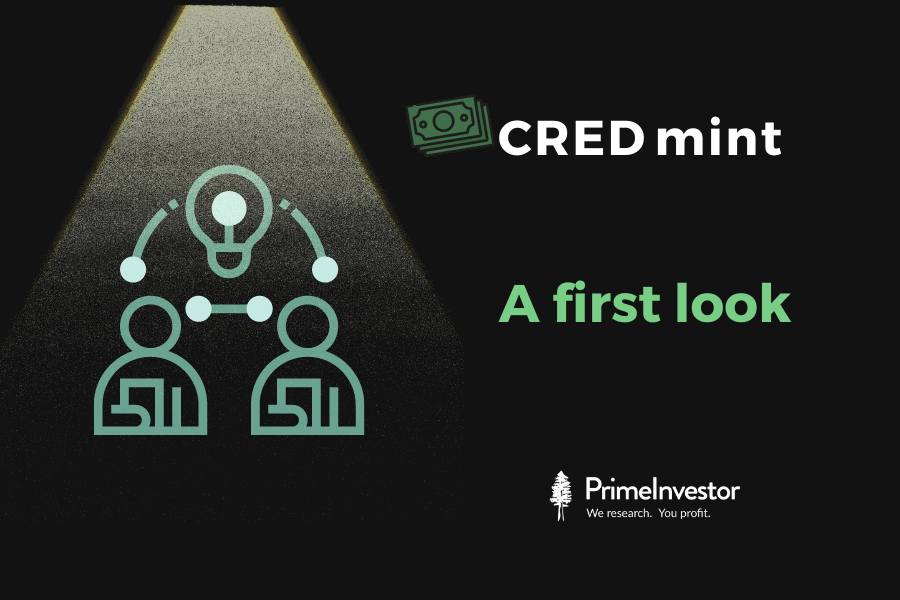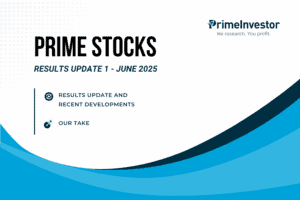Updated on 02-09-2021
Since I wrote the article below, Cred has completed the process of ‘selecting’ people who can be lenders. I had applied and got ‘selected’. Subsequently, I had a chat with one of the Cred employees about the product/program. Following are some of what I learned and my observations.
Interest rate: A lender can earn interest on their investment ‘upto 9%’. The return rate is NOT guaranteed. The person who spoke to me said that the rate of interest will very likely be 9% and that Cred will make every effort for it to be so.
My observation: This investment is not equivalent to Fixed deposits from banks or NBFCs where the term of deposit and the interest rate are fixed. Investors must keep this in mind.
Where the money will be lent: The money invested will be lent as part of the Cred Cash program to customers of the Cred app. The person that I spoke to said that the money will be lent to people with a high credit rating (upwards of 730) and hence the likelihood of default would be very low. Every investment would be split across 200 or so borrowers.
My observation: High credit quality borrowers is good and diversification across such a high number of borrowers is also good – both mitigate risks for an investor. Of course, you would need to trust the Indian retail credit scores to believe so.
Lending rates: Money will be lent at rates around 15-16% to borrowers.
My observation: Wow. The spread between the lending rate and the interest rate that an investor makes is a whopping 6%! Such a high spread is more like banks than, say, debt funds. But then, banks guarantee returns, while Cred Mint does not.
Limits: An investor should invest a minimum amount of Rs 1 lakh and can invest a maximum amount of Rs 10 lakh.
My observation: Minimum Rs 1 lakh means it is really not a retail product. Maximum of Rs 10 lakh means it is really not a HNI product. Somewhere in between…
Liquidity: The investor can take their money back at any time after investment. The ‘value’ of a person’s investment will always be displayed in the app, and a person can request withdrawal to their bank account any time. Providing such liquidity probably explains the need for such a high spread (6+%) in the product.
My observation: This is probably the most attractive feature of this product, although one could say that a debt fund offers similar liquidity with lesser risk.
Taxation: The returns will be taxed as income – at the slab rate of the investor. No tax benefits.
My observation: A non-guaranteed returns product with zero tax benefit is not a very attractive proposition.
Overall thoughts: So, Cred mint appears to be a product where returns are moderately high, risk is high, (promised) liquidity is very high, and taxation is unfriendly. For the inherent risks entailed in P2P lending, the return rate looks modest.
Fintech firm Cred has launched Cred Mint, a peer-to-peer lending platform. Let’s take a quick look at what the product is and what it promises.

Background
Cred, for those not familiar with it, is an app that lets customers pay their credit card bills. Card holders can pay off their monthly bills using UPI or net banking and gather Cred points. These points can be used to get discounts and offers from a variety of merchants – typically for fancy products from high-end retailers.
Presently, according to industry figures, Cred owns about 20% of the credit card payments made in the country.
As a side effect, Cred has a lot of information about the credit behaviour of its customers, and their credit-worthiness.
The startup has drawn a lot of attention both from consumers (thanks to its popular ad campaigns) and market observers (thanks to its fund raising spree and eye-popping valuations).
How the company planned to create revenues from its operations and how it plans to justify its valuations has remained a mystery.
Until now. The newly launched lending platform gives the first clue about Cred’s plan for sustainable and scalable revenues.
What is Cred Mint?
Cred Mint, as noted earlier, is a peer-to-peer lending platform. What this means is, simply put, people lending to each other by using an intermediary service.
By using Cred Mint, a customer can either borrow or lend to other Cred customers at “attractive” rates. For lenders, Cred is promising interest rates “up to 9%”, which is significantly higher than bank FD rates today.
For borrowers, this would act similar to personal loans from banks, except with significantly lower interest rates. For example, HDFC Bank charges rates between 10.5% to 21% along with a processing fee. One could expect P2P borrowing rates to be lower by at least 2-3% than such rates.
For lenders, this would act similar to fixed deposits in banks, except with significantly higher interest rates. For example, the same HDFC Bank offers rates around 5% for term deposits of a year or more. One would expect P2P interest rates to be higher by at least 2-3% than such rates.
Win-win for both borrowers and lenders, right?
Not quite. The rub, of course, is the credit-worthiness of the borrower and the question of how the lender can be sure that the borrower will return the interest and principal, at appointed times.
That is where Cred comes in. By virtue of knowing the credit worthiness of its customers (some of whom will be the borrowers), the notion is that Cred can be an intelligent middle man and can ensure, hopefully, lower rates of defaults.
At least, that’s the idea.
However, there are details that are missing in Cred’s announcement, which play the principal role in understanding what exactly this product involves and the ‘risk profile’ of this product as an investment option. One, the actual mechanism that will be employed to effect the lending – choosing the lender and fixing the rate. Two, how collections will be implemented, especially in cases of skipped payments. Three, the process and impact of missing interest or principal repayments on the lenders. Four, the lending (‘investment’) process and liquidity of the money invested.
Cred is partnering with Liquiloans, an RBI recognized NBFC for P2P lending.
So, we looked into Liquiloans’ offering and their FAQ document to get an idea of what might be on offer. At the outset, it appears that investors (lenders) will be able to choose the ‘class’ of borrowers they want to lend to (by specifying their credit worthiness by some metric). This is in contrast to ‘pure’ P2P lending where a lender ‘chooses’ a specific borrower and loans money to that person. In the case of Liquiloans, money will be pooled by the intermediary and lent to borrowers in the specified ‘class’ of borrowers and the money repaid will flow back to the lender from the pool.
Whether this is how Cred Mint will work is not known at this time. Those details, along with the points listed earlier, will go a long way towards determining whether this is a reasonable, even if far riskier, fixed-income investment option.
The investment perspective
At PrimeInvestor, we are more interested in the investment perspective than the borrowing perspective. The selling proposition for investors, from Cred, is that:
- Higher interest rates
- High liquidity – get money without any fees or charges whenever you want
- Higher reliability (thanks to its analytical insights)
Prima facie, this is an attractive proposition. However, the significantly higher risk and the limited regulatory safeguards that this product comes with relative to a liquid fund or a fixed deposit (that offers all these benefits) has to be recognized. Of course, a liquid fund cannot ‘guarantee’ returns like this product does, but keep in mind that this ‘guarantee’, unlike a bank FD guarantee, is not backed by any entity that will step in to bail out an investor.
Therefore, we need a lot more details about this product before forming any investment opinion. We will have more to say as more information emerges and as we experience the product first-hand.
So, these two factors – the potentially significantly higher credit risk involved (and thus not anywhere in the same league as a bank FD or debt funds), and the lack of operational details at this time – gives us reasons to be very cautious about this launch. As details emerge, we’ll know better and will have more to say.
We’ll keep you posted.
Bonus link: A video that I made a few weeks ago about Cred, where I did NOT foresee this coming 🙂






6 thoughts on “CRED launches CRED Mint”
Hello Mr.Srikanth – thanks for writing on p2p.. i have some experience investing in p2p platforms in the past.. I have taken principal out in some cases and did lose money in very few cases but those were high risk ones with no cibil score and such. The pool loans that CRED and Faircent type Platforms offer at relatively less interest rates such as this one is relatively safe at least with my very little experience so far.. Besides since there would be way too many borrowers, the risk of losing a big sum would be remote.. so, thank you for writing this useful article.
Thank you. Would it be possible for you to write a brief note about your experiences? It would be especially useful since you have used multiple platforms. Please let us know – you can write to [email protected] and we can get in touch with you. Thanks!
Thanks for the article. You have focussed on Cred Mint. Do you think most of what applies to them is true of all P2P lending platforms? Will it be possible to do a comparative study of the options available in the P2P lending space?
Thanks, will try.
All their previous moves before this looked like they were trying to do something to justify their valuations or just add some more revenue stream to show in ppts for their next round of funding meetings. This is first-time they came up with something that can truly justify the potential. Have to wait and see.
Really good article as usual 🙂 and happy to see something “different”
will be really interesting , how this turns out, BTW, any idea if this has worked out in China or any other countries? I did read about the govt collecting lot of data in China, but how has P2P lending worked out for other countries?
Comments are closed.